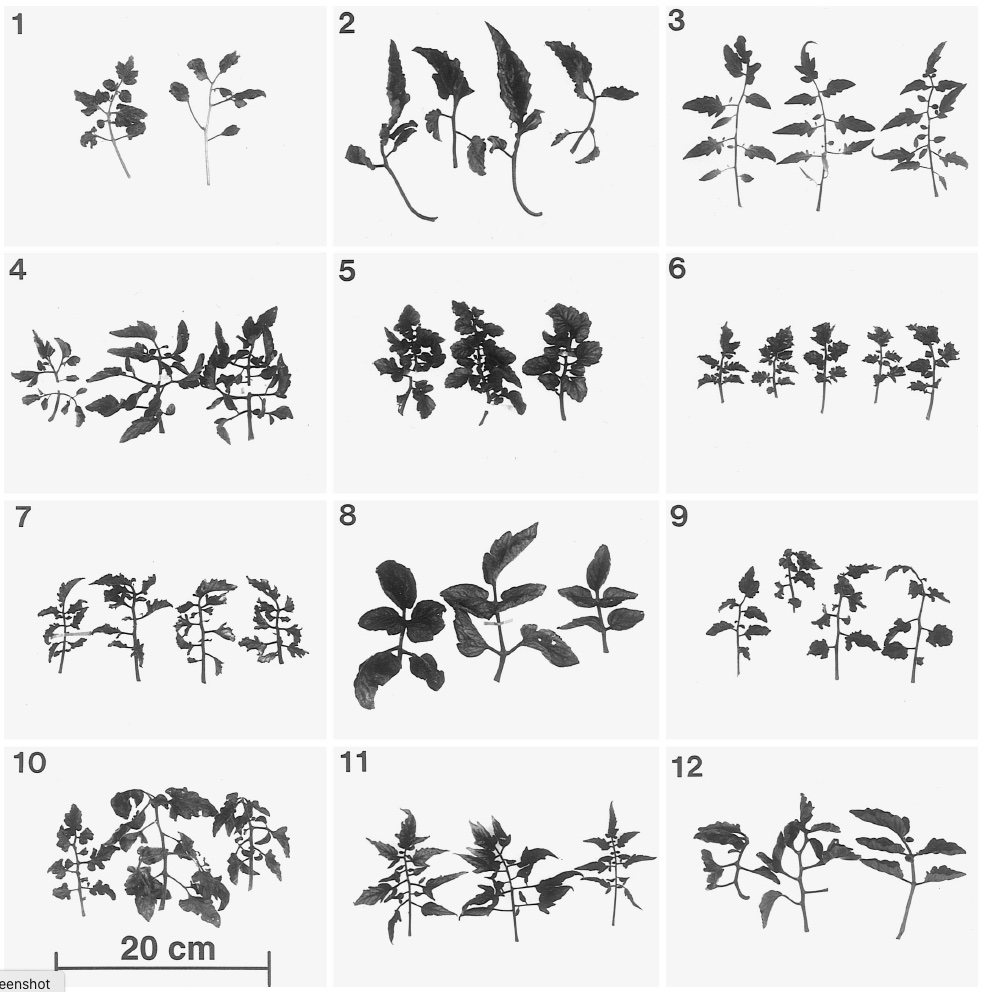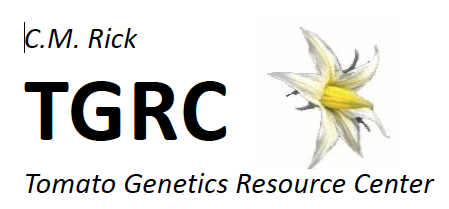Seedling traits of primary trisomics
Rick, C.M. (1987) Tomato Genetics Coop. Report 37: 60-61.
A revision of my note on managing trisomics (TGC 5:24-25) is long overdue. In the intervening 32 years we have become aware of errors and additional key traits. Although this note deals primarily with seedlings, the same syndromes continue throughout growth. Another motive is selfish: all too often I am asked to identify trisomics in overgrown jungles - situations that could have easily been avoided by ruthless elimination of diploids in early seedling development. By thus narrowing the populations to entirely or predominantly trisomic individuals, the investigator can save valuable greenhouse space, favor the desired trisomics with better growing conditions, and save time and, often, seeds. As indicated in the following table, nearly all the primaries can be identified in seedlings. They are generally slower and differ from diploids and each other in an array of readily identifiable traits.
| Triplo- | Growth rate | Cotyledons | Leaf color | Leaf surface | Leaf serration | Other |
| 1 | extremely retarded* | small, dark | dark green* | convex*, deep veins | reduced | often malformed |
| 2 | moderately retarded | + | light green | + | increased* | slender, lax stems and leaves, enlarged terminal leaflet* |
| 3 | moderately retarded | narrow, elongate* | + | + | reduced | elongate, narrow segments* |
| 4 | retarded | small | light green* | + | + | first and second often malformed*; downcurled tip |
| 5 | moderately retarded | + | yellow green | rugulose* | reduced | |
| 6 | very retarded | small* | + | + | + | fewer segments* |
| 7 | extremely retarded* | small, often tricot* | dull green | upcurled margins | increased | short, stocky plants* |
| 8 | retarded | small | grey green* | convex* | greatly reduced* | broad segments* |
| 9 | retarded | small | + | + | + | reduced leaves; diminutive, often blind plant* |
| 10 | very retarded | short | dark green | rugose | increased | short, stocky plants* |
| 11 | very retarded | ? | light green | ? | reduced | very low transmission rate limits observations |
| 12 | extremely retarded | tiny, dark* | dark green | + | increased* | slow, early growth* |
*=most diagnostic features
+=like diploid

For more information on trisomics, including monosomic alien addition lines:
Chetelat, R.T., C.M. Rick, P. Cisneros, K.B. Alpert, and J.W. DeVerna (1998) Identification, transmission, and cytological behavior of Solanum lycopersicoides Dun. monosomic alien addition lines in tomato (Lycopersicon esculentum Mill.). Genome 41:40-50.
Khush, G.S. and C.M. Rick (1967) Tomato tertiary trisomics: Origin, identification, morphology and use in determining position of centromeres and arm location of markers. Can. J. Genet. and Cytology 9:610-631.
Khush, G.S. and C.M. Rick (1967) Novel compensating trisomics of the tomato: Cytogenetics, monosomic analysis and other applications. Genetics. 56(2):297-307.
Khush, G.S. and C.M. Rick. (1969) Tomato secondary trisomics: Origin, identification, morphology and use in cytogenetic analysis of the genome. Heredity 24:129-146.
Rick, C.M, W.H. Dempsey and G.S. Khush (1964) Further studies on the primary trisomics of the tomato. Can. J. Genet. Cytology 6:93-108.
